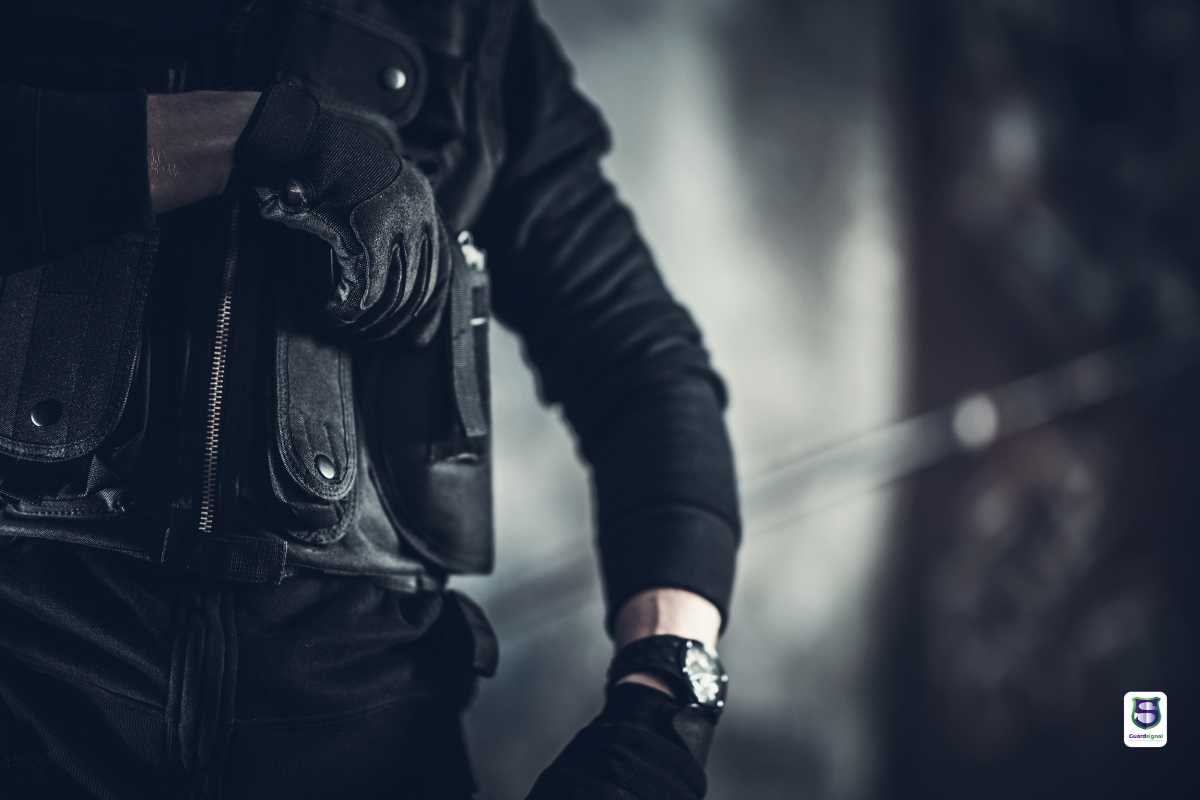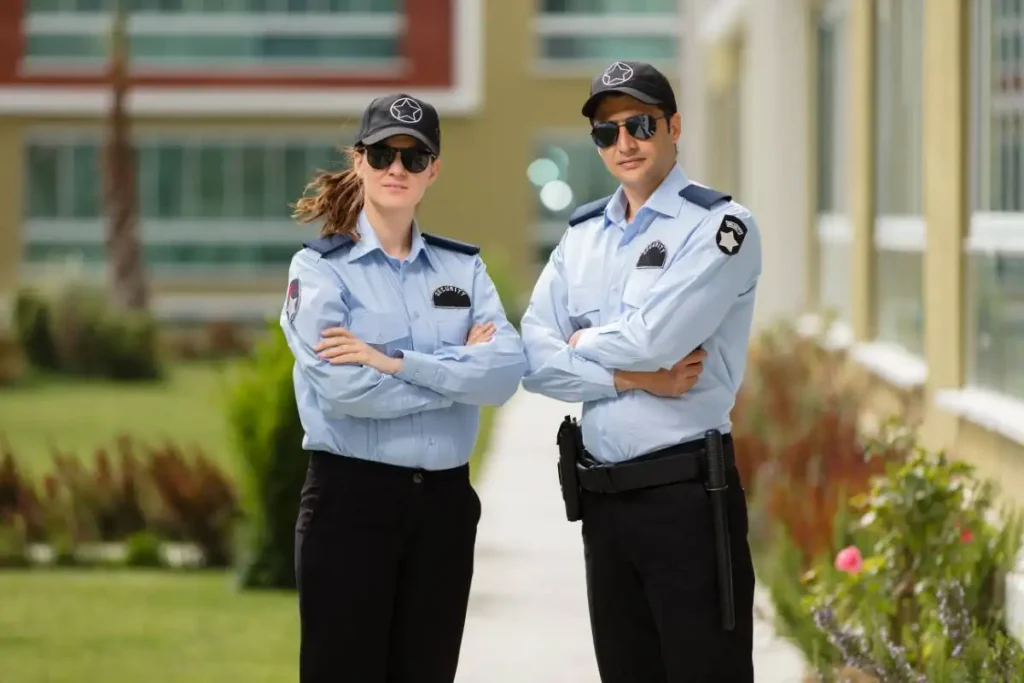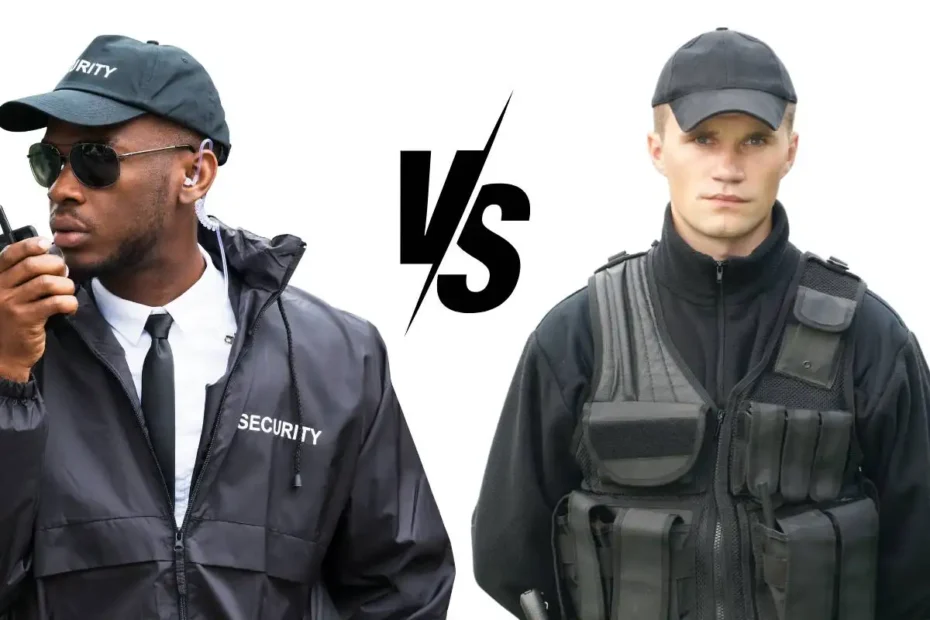Security guard training is essential for anyone who wants to become a security guard, whether armed or unarmed. The training provides the necessary knowledge and skills to effectively perform the duties of a security guard. The training is also required by law in most states.
The training for unarmed security guards typically covers topics such as:
- Basic security procedures
- Communication skills
- Emergency response procedures
- Observation and reporting
- Customer service
On the other hand, the training for armed security guards includes all the topics covered in the training for unarmed security guards, as well as additional topics such as:
- Firearms safety and handling
- Use of force laws and regulations
- Legal liabilities and responsibilities
- Tactical training
The duration of the training varies depending on the state and the type of security guard. In general, the training for unarmed security guards is shorter than the training for armed security guards.
Security guards are also required to undergo ongoing training to maintain their skills and knowledge. This training may include refresher courses on the topics covered in the initial training, as well as new topics that are relevant to the security industry.
Armed Security Guard Training

Armed security guard training is more extensive than unarmed security guard training. In addition to the basic security guard training, armed security guards must undergo additional training in firearms safety and handling, legal aspects of armed security, use of force continuum, and firearms proficiency and qualification.
Firearm Safety and Handling
Firearm safety and handling is an essential part of armed security guard training. The training covers the safe handling, storage, and use of firearms. Armed security guards must learn how to properly load, unload, and clear their firearms. They must also learn how to maintain their firearms in good working condition.
Legal Aspects of Armed Security
Armed security guards must be familiar with the legal aspects of armed security. They must understand the laws governing the use of deadly force and the use of force continuum. They must also be aware of the legal requirements for carrying firearms and the consequences of violating those requirements.
Use of Force Continuum
The use of force continuum is a framework for understanding the appropriate use of force in a given situation. Armed security guards must be trained to use force only when necessary and to use the minimum amount of force required to control a situation. They must also be trained to de-escalate situations whenever possible.
Firearms Proficiency and Qualification
Armed security guards must demonstrate proficiency with their firearms through regular training and qualification. They must be able to shoot accurately and safely under a variety of conditions. They must also be able to make quick decisions and react appropriately in high-pressure situations.
Unarmed Security Guard Training

Unarmed security guards are hired to protect property or people without the use of firearms. They act as a line of defense to deter a situation from escalating to needing police involvement. To be effective, unarmed security guards need to undergo rigorous training that emphasizes conflict de-escalation, physical control and defensive tactics, observation, and reporting skills.
Conflict De-escalation Techniques
Conflict de-escalation techniques are essential for unarmed security guards. These techniques help diffuse potentially violent situations and prevent them from escalating. Unarmed security guards must learn how to communicate effectively and remain calm under pressure. They must also learn how to read body language and recognize the warning signs of aggression.
Physical Control and Defensive Tactics
Physical control and defensive tactics training are important for unarmed security guards. They need to know how to protect themselves and others if a situation turns violent. This training includes learning how to use non-lethal weapons such as batons, pepper spray, and tasers. Unarmed security guards must also learn how to use physical force to restrain an individual without causing harm.
Observation and Reporting Skills
Observation and reporting skills are critical for unarmed security guards. They must be able to quickly and accurately assess a situation and report it to the appropriate authorities. This training includes learning how to write detailed reports, take accurate notes, and document incidents. Unarmed security guards must also learn how to gather evidence and testify in court if necessary.
Common Training Elements
Security guards, whether armed or unarmed, undergo rigorous training to prepare them for the demanding and often dangerous work they do. While the specific training requirements may vary depending on the type of security work and the state where the guard works, there are several common training elements that most security guards must complete to be prepared for the job.
Professional Ethics and Conduct
One of the most important training elements for security guards is professional ethics and conduct. Guards must be trained to understand and adhere to legal and ethical standards of conduct, including how to interact with the public, how to maintain confidentiality, and how to avoid conflicts of interest. This training also includes an understanding of the legal limits of their authority and how to handle situations where their authority is challenged.
Communication Skills
Effective communication is crucial for security guards to perform their job duties. Guards must be able to communicate effectively with other security personnel, emergency responders, and the public. They must also be able to write clear and concise reports and maintain accurate records. Communication training for security guards includes verbal and written communication skills, as well as an understanding of nonverbal communication and body language.
Emergency Response Protocols
Security guards must be prepared to respond to a wide range of emergencies, including medical emergencies, fires, natural disasters, and criminal activity. Emergency response training for security guards includes first aid and CPR, fire safety, and evacuation procedures. Guards must also be trained in the use of emergency equipment, such as fire extinguishers and AEDs, and how to respond to a variety of emergency scenarios.
Armed security guards must also receive specialized training in the use of firearms and other weapons. This training includes marksmanship, weapon safety, and legal and ethical considerations related to the use of force.
Certification and Continuing Education
Both armed and unarmed security guards must meet certain licensing requirements to work in the security industry. According to Security Guard Training Central, the licensing requirements vary by state but generally include completing a state-approved training program and passing a written exam.
For armed security guards, the requirements typically include additional training in firearms safety and usage. In some states, such as California, the training requirements for armed security guards are more stringent than those for unarmed security guards.
Security guards must also participate in continuing education and skill development programs. This is especially important for armed security guards, who must maintain proficiency in the use of firearms.
Continuing education programs for security guards may include courses on topics such as conflict resolution, emergency response, and self-defense. Some states require security guards to complete a certain number of continuing education hours each year to maintain their licenses.
